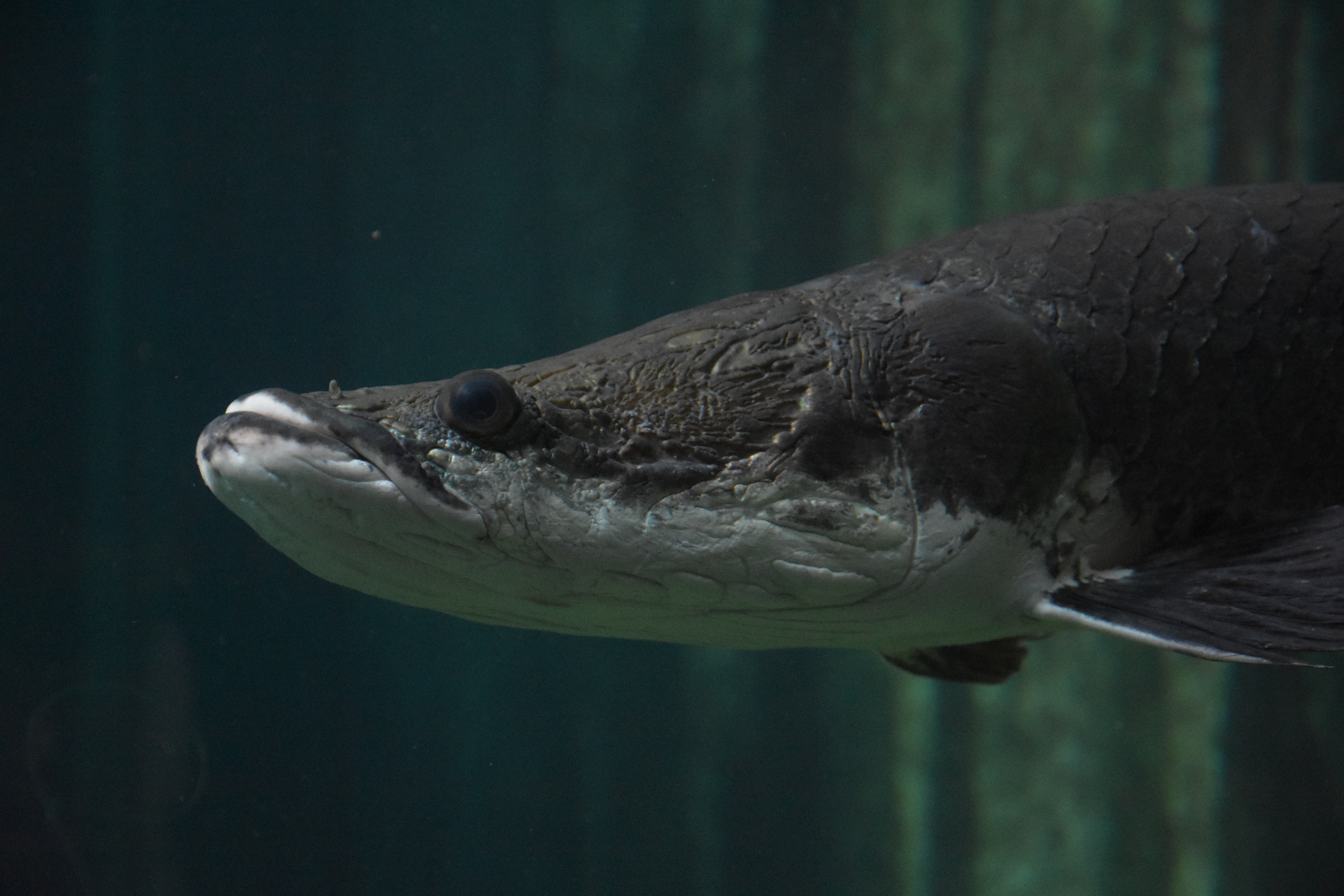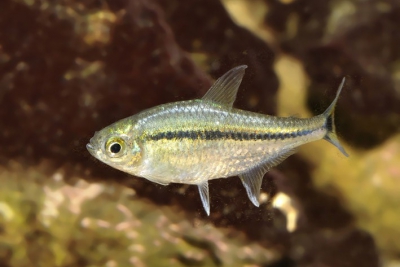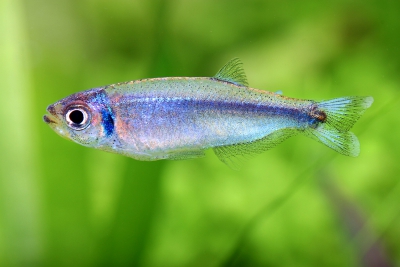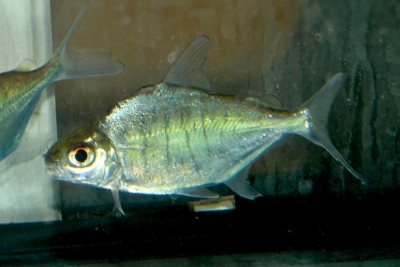arapaima
| Scientific name | Arapaima gigas |
|---|---|
| Descriptor | Schinz |
| Year of description | 1822 |
| IUCN category (World) | DD |
| Family | Arapaimidae |
| Genus | Arapaima |


Introduction
Arapaima gigas, known as arapaima in Brazil and paiche in most Spanish-speaking countries, is one of the largest freshwater fish in the world. Native to the Amazon basin in South America, it plays a crucial role in both its natural ecosystem and local culture and economy.
This iconic species is currently threatened by overfishing and habitat destruction in much of its range. To alleviate fishing pressure, several fish farms have been established in different countries in South America.
Conversely, arapaima has become invasive in some regions, particularly in Bolivia. Originally from Peru, it is believed to have entered Bolivian rivers following a breach in a fish farm.
Who is it?
Morphology
-
Average size200 cm
-
Maximum size450 cm
-
Longevity20 year
-
ShapeOval
-
Average size200 cm
-
Maximum size450 cm
-
Longevity20 year
-
ShapeOval
How to recognize This fish ?
With a record size around 4.50 meters, the arapaima is one of the largest freshwater fish on the planet. However, being a regular target for fishermen, large specimens are now almost nonexistent in the wild. Most large individuals measure around two meters. Adults reach sexual maturity at a size of about 1.5 meters.
The elongated and robust body is covered with thick, tough scales, often olive green with red hues on the tail.
Sexual dimorphism
Sexual dimorphism is relatively subtle. External differences between males and females are not easily discernible, often complicating gender determination without internal inspection. However, males and females can be differentiated by their behavior during the breeding period, where males build and guard nests.
Behaviour & Life cycle
-
dietcarnivorous
-
Sociabilityliving in small groups
-
territorialNo
-
Way of livingdiurnal
The arapaima is an ambush predator and part of the predators in its ecosystem. It is an opportunistic predator that feeds primarily on fish and aquatic invertebrates. When dissolved oxygen in the water is limited, such as during dry periods, it regularly comes up to the surface to gulp air, producing a distinctive sound.
This species migrates to floodplain habitats during the flood season and returns to lacustrine habitats when water levels recede.
Reproduction
-
Reproductionovipare qui pond sur substrat découvert
In Brazil, reproduction mainly occurs between January and May, when seasonal rains flood the forests. Males build shallow nests on sandy bottoms, measuring about 15 cm deep and 50 cm wide.
After spawning, males guard the eggs and juveniles, ensuring their protection until they are sufficiently developed to survive on their own. This parental care is crucial for the survival of young arapaimas in an environment where predators are abundant.
Harmless species
This species does not pose a particular danger to humans if encountered in its natural environment.
Origin and distribution
Geographic distribution & Conservation
Historically, this species was abundant throughout the Amazon basin and played a crucial role in the diet of indigenous communities. However, since the late 18th century, overfishing for the trade of its dried and salted flesh has significantly reduced its populations. In the 1960s, the species was still common near major Amazonian cities, but it became commercially extinct in these areas by the late 1970s. Despite the ban on commercial fishing in 2001, illegal fishing persists, still threatening the species.
Conservation efforts have been implemented, especially in the Mamirauá Sustainable Development Reserve, where limited and sustainable arapaima exploitation is permitted. These local initiatives have led to an increase in populations in some areas. However, the long-term preservation of its populations on a global scale requires a thorough understanding of its genetic diversity and the establishment of sufficient reserves to maintain a wide genetic diversity.
Recently, arapaima has also become a problem as an invasive species, particularly in Bolivia. Originating from Peru, the species is believed to have entered Bolivian rivers through a leakage in a fish farm. The paiche, as it is named in this region, has begun to colonize local waterways, advancing about 40 km further each year. Its imposing size and voracious appetite pose a serious threat to native fish, either preying on them or forcing them to flee, thus disrupting local ecosystems.
Conservation status of populations (IUCN)
What is its habitat?
Natural environment characteristics
-
Temperature24 - 28 °C
-
pH (acidity)5.8 - 7
-
gh (hardness)5 - 12
-
FlowMedium, Slow and Stagnant
Biotope presentation
This species mainly inhabits the rivers, lakes, and floodplains of the Amazon basin. It prefers calm, shallow waters rich in aquatic vegetation. During the rainy season, it migrates to floodplains, taking advantage of rising waters to access new territories and abundant food resources.
During low water periods, it returns to lacustrine habitats, where it is better protected against environmental fluctuations. This diverse and biodiverse habitat is essential for the life cycle of the arapaima and underscores the importance of conserving these ecosystems for the species' survival.
Species of the same biotope
To go further
Sources & Contributions
Participation & Validation
The Fishipedia team and specialist contributors are committed to providing high-quality content. However, although the information comes from scientific sources or testimonials from specialists, the cards may contain inaccuracies.

Robert Allgayer

Benoit Chartrer
Translation
Translation done with the valuable contribution of our translators, who make this information available to a wider audience. We sincerely thank them for their commitment.
In collaboration with : Fédération Française Aquariophilie
Bibliographic references
Conservation strategies for Arapaima gigas (Schinz, 1822) and the Amazonian várzea ecosystem - Hrbek, T. a,b - Crossa, M.c - Farias, IP - Braz J Biol - 2007. 67(4, Suppl.): 909-917
Scientific partners
Species of the same biotope


















